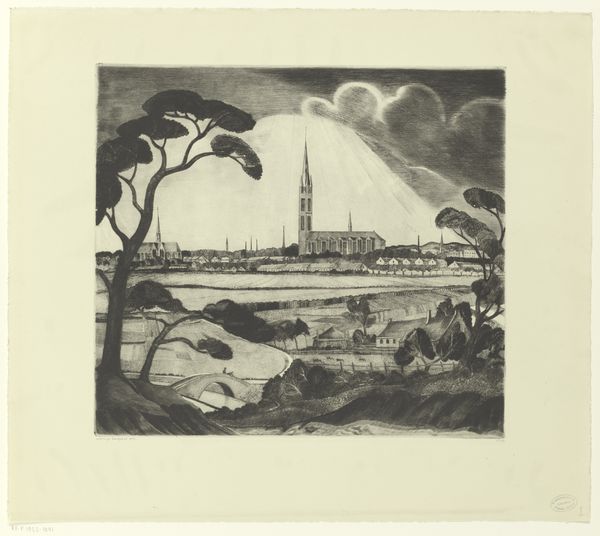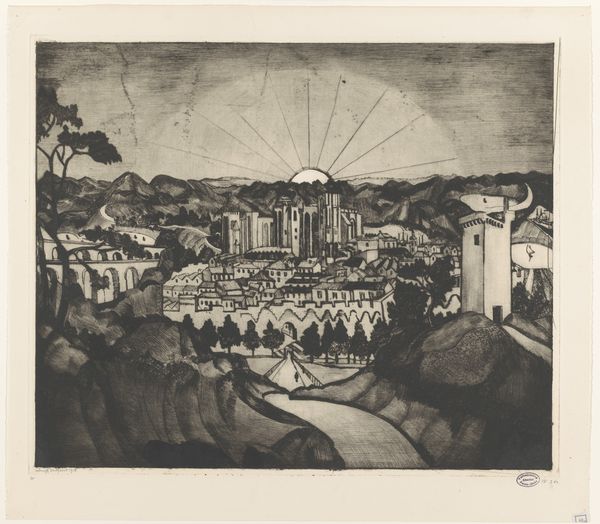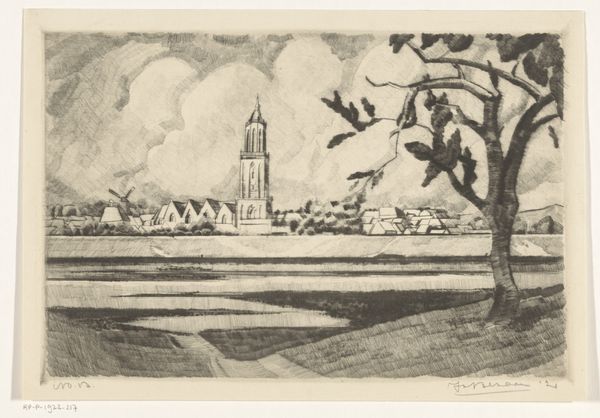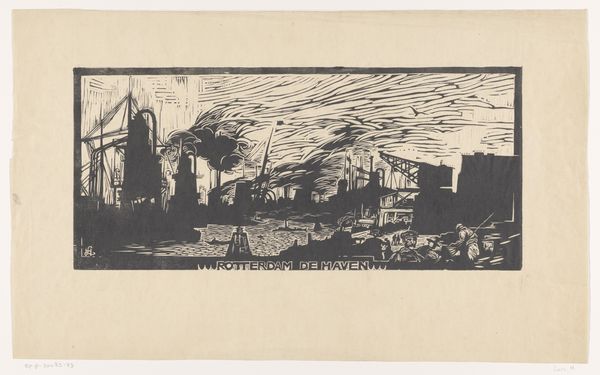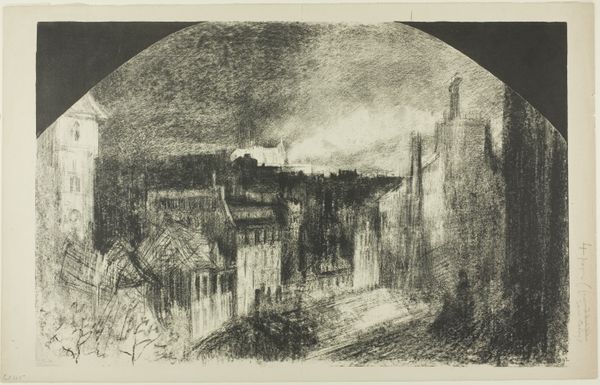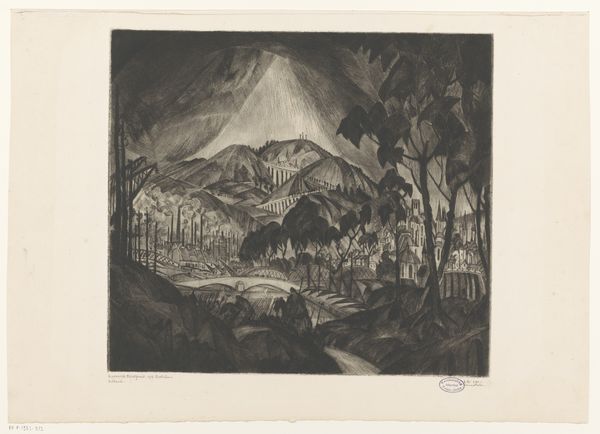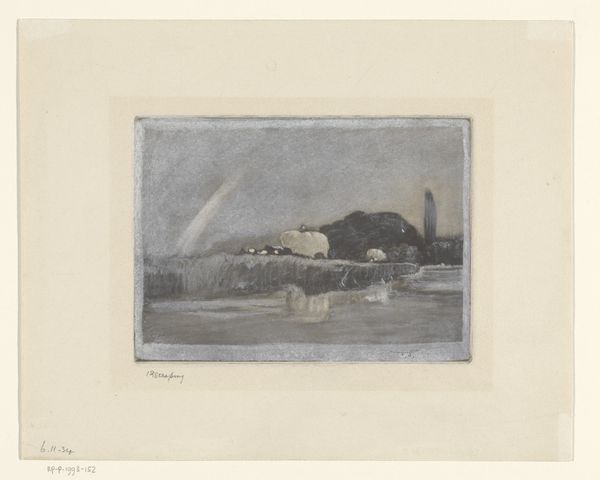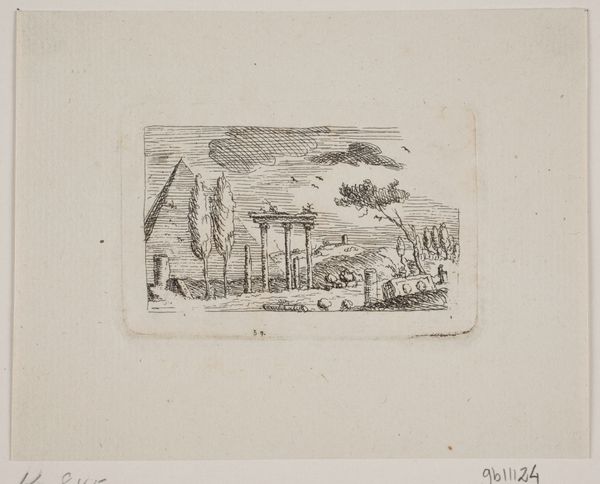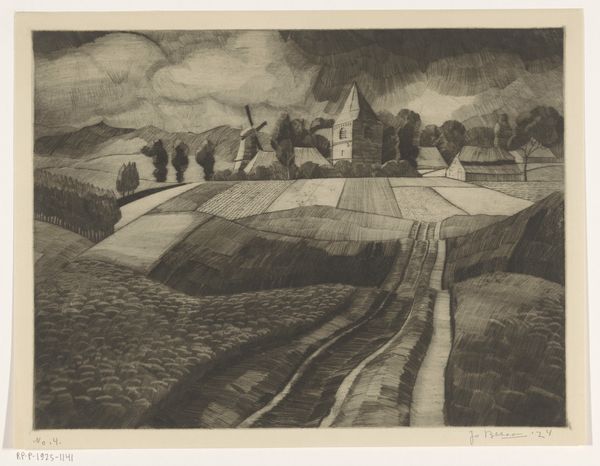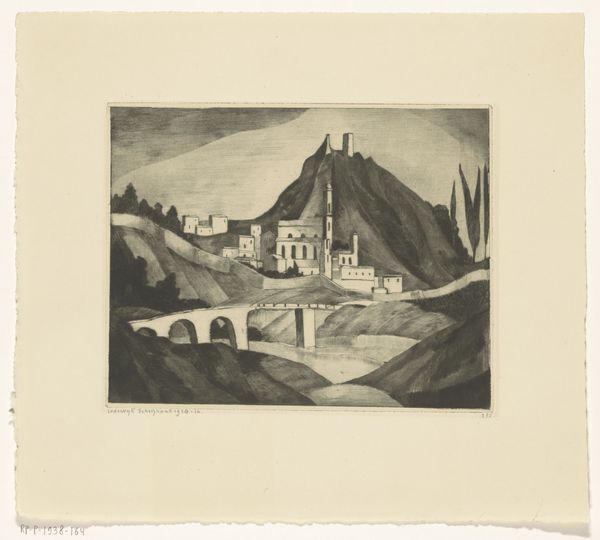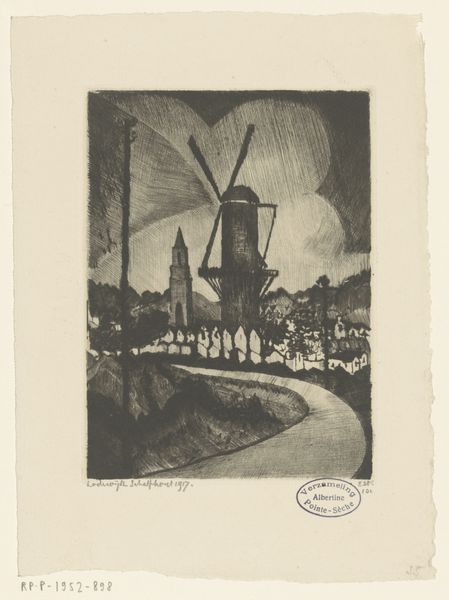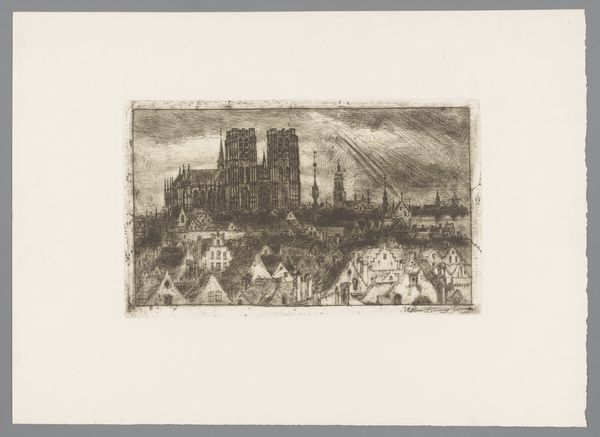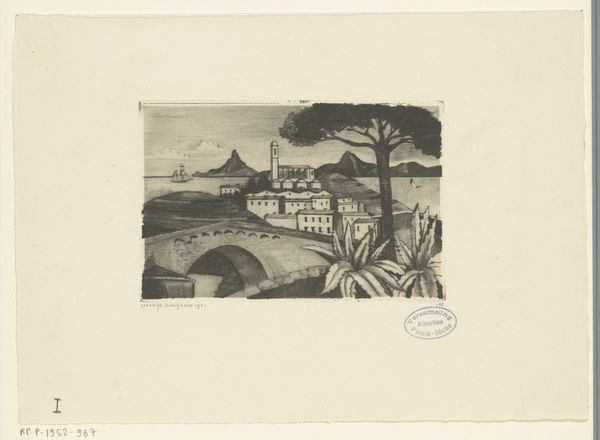
print, etching
# print
#
etching
#
landscape
#
symbolism
#
cityscape
Dimensions: height 199 mm, width 296 mm
Copyright: Rijks Museum: Open Domain
Curator: Lodewijk Schelfhout's "Kathedraal," created in 1919, uses etching to present a rather striking cityscape. The piece resides here at the Rijksmuseum. What strikes you initially about it? Editor: There's a powerful, almost brooding atmosphere. The dark, looming sky contrasted with the illuminated cathedral… it’s definitely not your typical sunny landscape. It feels ominous. Curator: Indeed. And that very tension speaks volumes about the socio-political climate in Europe at the time. The etching was made just after the First World War. Symbolism was burgeoning then, reflecting anxieties and perhaps even a crisis of faith. Consider the cathedral; is it a beacon of hope or a monument of outdated authority? Editor: I see your point. The placement of the cathedral, dominating the town below, could represent institutional power structures. The artist almost traps the town. But what is interesting is the gate, centrally located. Perhaps there is another option available to those that wish to pass through. The role of art itself – prints were often more accessible than painting – becomes critical. They could disseminate messages widely, inviting debate. Curator: Precisely. Moreover, etchings like this were often distributed and collected among burgeoning artistic and intellectual circles. Schelfhout places the viewer in a position to think about cultural and societal values, opening it up to question structures. Editor: The city looks to be caught between this beautiful landscape but weighed down. It reflects on how artists saw urban development encroaching into what they saw as untouched nature. Curator: It does provoke reflection on rapid change and the challenges inherent in progress, wouldn’t you agree? Editor: Absolutely. Thank you for prompting that view; a fascinating piece that shows both beauty and uncertainty. Curator: My pleasure. I am left pondering how artistic expressions often mirror the anxieties of a specific time period, offering an entry point for re-examining historical conditions.
Comments
No comments
Be the first to comment and join the conversation on the ultimate creative platform.
